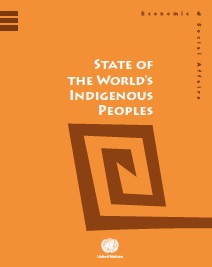 The United Nations just released its highly informative State of the World’s Indigenous Peoples report. Throughout the report, the UN reiterates the fundamental importance of providing greater educational opportunities to indigenous children. For those without the time to hunker down and read all 250 pages of the report, here are a few excerpts that pertain specifically to Guatemala and education.
The United Nations just released its highly informative State of the World’s Indigenous Peoples report. Throughout the report, the UN reiterates the fundamental importance of providing greater educational opportunities to indigenous children. For those without the time to hunker down and read all 250 pages of the report, here are a few excerpts that pertain specifically to Guatemala and education.
“Indigenous peoples also face huge disparities in terms of access to and quality of education and health. In Guatemala, for example, 53.5 per cent of indigenous young people aged 15-19 have not completed primary education, as compared to 32.2 per cent of non-indigenous youth. Although infant and child mortality has been steadily decreasing throughout Latin America over the last four decades, child mortality is still 70 per cent higher among indigenous children. Furthermore, malnutrition is twice as frequent among indigenous children in the region.”
“Indigenous peoples also suffer from discrimination in terms of employment and income. According to the ILO, indigenous workers in Latin America make on average about half of what non-indigenous workers earn. Approximately 25-50 per cent of this income gap is “due to discrimination and non-observable characteristics, such as quality of schooling”.
“…in Guatemala, indigenous peoples’ poverty rates are 2.8 times higher than the rest of the population.”
“In Guatemala, only 54 per cent of indigenous girls are in school, compared with 71 per cent of indigenous boys. By age 16, only a quarter of indigenous girls are enrolled, compared with 45 per cent of boys.”
The World Bank has reported that “the rate of stunting [height/age] for Guatemala overall is 44 percent, but for indigenous children the rate is 58 percent, higher than either Yemen or Bangladesh, and almost twice the rate for non-indigenous children.
Read the entire report here.